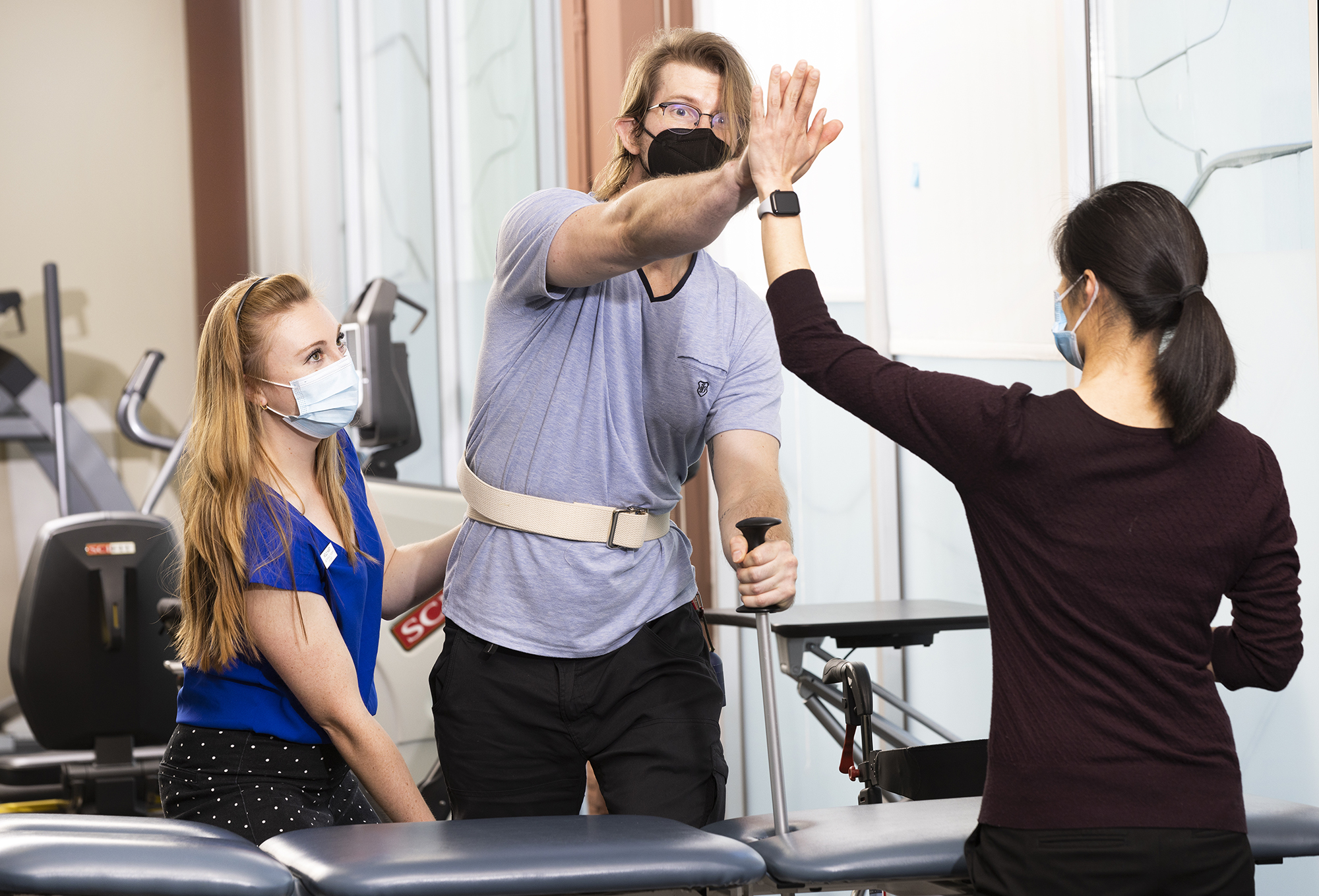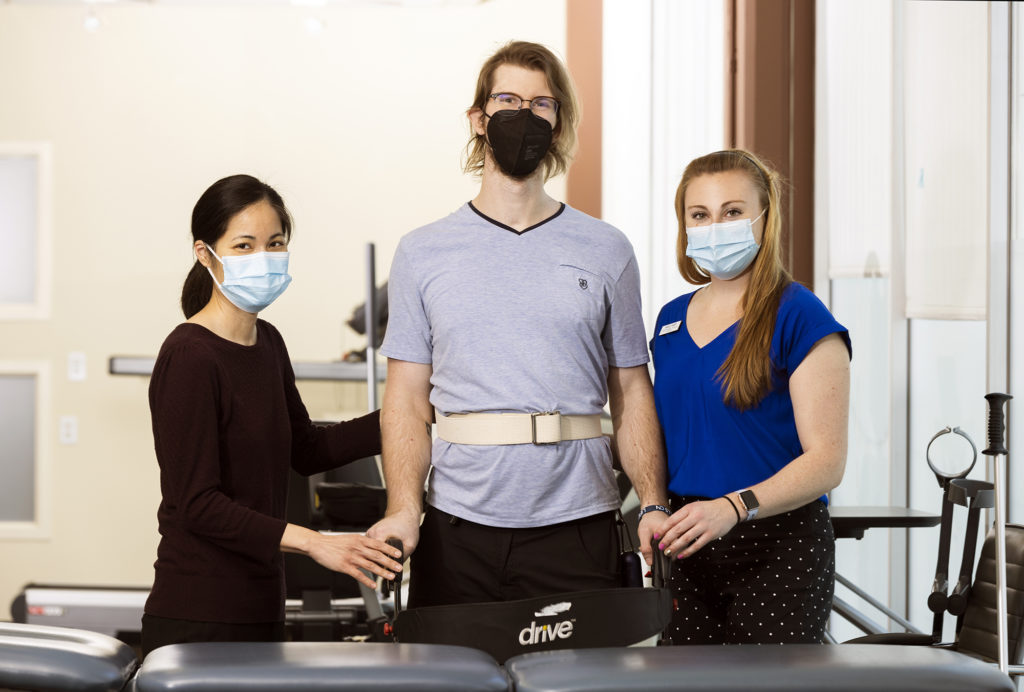03.31.2022
By uscbknpt
Step By Step

At the age of 29, Matt Little experienced a stroke that could have sidelined him. Thanks to USC Physical Therapy, he has found a path forward.
BY MICHELLE McCARTHY
THE TINGLING STARTED ON HIS FACE and quickly traveled to his knee. “I think I’m having a stroke,” Matt Little told his then-girlfriend over the phone. Only 29 at the time, Little didn’t want to risk it and promptly took an Uber to Cedars-Sinai, a decision that saved his life. His intuition was right — he’d experienced a hemorrhagic stroke, which is caused by a broken blood vessel in the brain. The doctors performed a battery of tests on the USC alumnus, and that’s the last thing Little remembered until a month later when he woke up in an acute rehab facility. “I’d lost all sensation on my right side and couldn’t lift or straighten my head,” he says.
Five years later, Little has come a long way in his recovery, regaining the ability to walk and talk, but he remains determined to reach his ultimate goal: walking without an assistive device. If the progress he’s made after working with faculty and students at USC Physical Therapy — the faculty practice of the USC Division of Biokinesiology and Physical Therapy — for only two months is any indication, he’s well on his way to achieving it.
Core Fundamentals
As a part of her third-year clinical rotations, Holly Hart DPT ’22 has worked with Little, under the supervision of Lori Ginoza DPT ’06, assistant professor of clinical physical therapy and director of USC/Rancho Los Amigos National Rehabilitation Center’s neurologic physical therapy residency.
“I’m always around, but Holly has been able to lead the sessions from early on,” Ginoza says. “I’ll work with her after a session to help her through her thought process and discuss how she felt about the session. We’ll talk through some of the biomechanics and plan for what Matt will need moving forward.”
Hart has been focusing on doing a lot of lower body control oriented toward Matt’s right side. “We’ve been working on tasks he can do at home to strengthen his core and lower extremities. I’ll have him practice walking, focusing on mechanics, with bilateral forearm crutches. A lot of the therapy has been focused on creating stability and building Matt’s balance confidence.”
Hart says the experience has taught her to be flexible in the moment while treating a patient. “Working with Matt, I’ve learned to be able to make small adjustments that I maybe wasn’t initially planning for,” she says.

A Sense of Empowerment
Ginoza says these sessions allow Hart the opportunity to explore and try new options, all while building her confidence. “Through her time with Matt, Holly has learned to modify a treatment plan as needed and to work as a team with her patients. That’s what I want her to take away from this.”
Two skill sets that are further developed under the supervision of a clinical instructor during a clinical rotation are movement analysis and clinical reasoning development, both of which help the clinician develop an intervention plan.
Physical therapy can improve the quality of life for stroke patients in a myriad of ways. For Little, it has provided him a sense of empowerment. “It gives him the ability to participate in improving his walking to reach his lifelong goal and facilitate future job opportunities,” Ginoza says.
Paying It Forward
Little’s main motivation to walk without an assistive device stems from his desire to become a behavioral analyst, working with individuals who have had a brain injury.
“The field I am studying assists those with challenging behaviors to participate more fully in rehab therapy,” says Little, who is currently in his last year of grad school at the University of West Florida. “I know how critical rehabilitation is to the recovery process, and there are folks who are not able to participate fully due to their injuries.”
At Little’s last session, Hart tracked his official progress to date and noted significant improvements in his gait speed, walking stability and overall confidence. “I’m seeing progress in terms of being able to stabilize my trunk and feel where midline is,” Little shares.
A good portion of these positive results must be attributed to Little, as Ginoza and Hart both attest to his strong commitment to the program. “He’s absolutely excellent at doing the things we tell him to do at home, if not more,” Hart says. “He’s always thanking me and Lori for what we do, and I have to take a step back and say, ‘Hey, you’ve done this. We’ve just been your guide.’”
PHOTO: GLENN MARZANO

